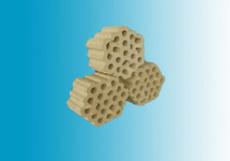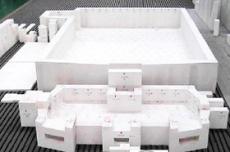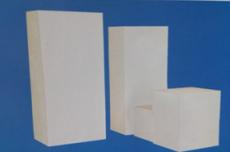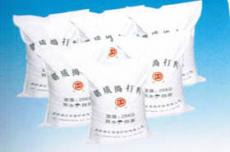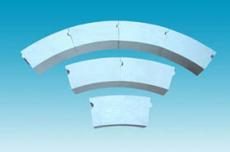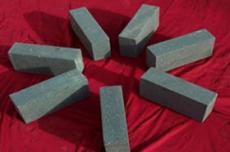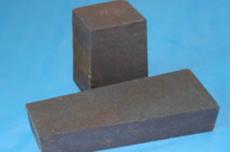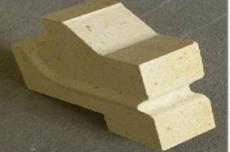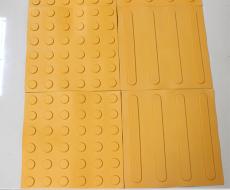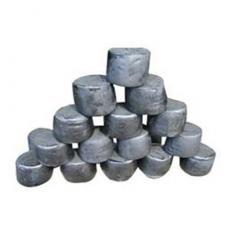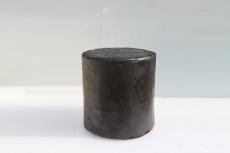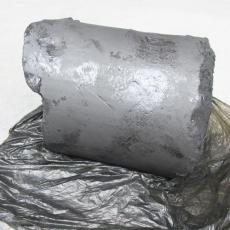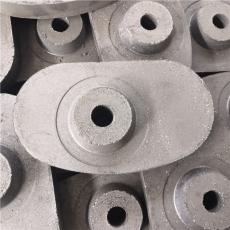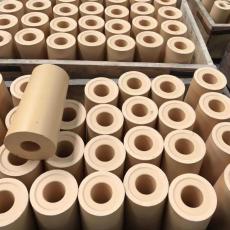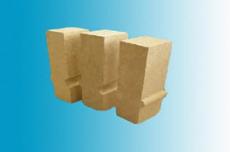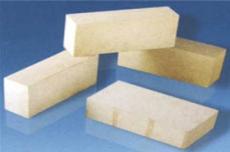
The pre-firing furnace temperature of the short-process pre-firing kiln is 900~1200℃. The existing cement kiln refractory materials used in this temperature range include high-alumina refractory materials, spinel refractory materials, mullite refractory materials, SiC refractory materials and magnesia refractory materials. The performance of various refractory materials and their use in cement short-process pre-firing kilns are as follows:
PART.01 Plate-shaped corundum refractory materials
Plate-shaped corundum is a pure sintered alumina that is completely sintered and shrunk without any additives, and has a coarse structure and a well-developed α-Al2O3 crystal structure. Its microstructure has the following characteristics:
(a) Well-developed α-Al2O3 crystal composition;
(b) α-Al2O3 crystals are coarse, with a medium particle size of 40μm-200μm, and its two-dimensional crystal morphology is flat and interlaced with each other:
(c) α-Al2O3 crystals contain many 5μm-15μm round closed pores; while open pores are relatively few, generally 2%-3%.
Due to the above structural characteristics of tabular corundum, it has the following physical properties: ① High melting point, about 2040℃; ② High grain hardness, Mohs hardness 9, Knoop 2000; ③ Chemical corrosion resistance, except for hydrofluoric acid and phosphoric acid, most acidic minerals have no effect on tabular corundum: ④ Because it does not have microcracks and large internal pores, its strength is very high; at the same time, the strength does not drop much when subjected to thermal shock, so it has good thermal shock stability.
Plate-shaped corundum refractory is one of the representative high-aluminum refractory materials. Its advantages are high refractoriness; high heat load strength and small creep: high density and low permeability; good thermal shock stability and wear resistance; low thermal shrinkage; high purity and reduced influence of impurities on the high-temperature performance of materials.
However, plate-shaped corundum refractory is a neutral refractory material. It is easy to react with alkaline materials during the calcination of cement clinker. Therefore, it is not suitable for the high-temperature calcination environment of cement short-process pre-firing kiln.
PART.02 Spinel Refractory
Magnesium-aluminum spinel is referred to as spinel. It has the properties of high hardness, stable chemical properties, high melting point, good thermal shock resistance, abrasion resistance and erosion resistance. The thermal expansion coefficient of magnesium-aluminum spinel is medium. The thermal expansion coefficient α=8.9×10-6/℃ at 900-1100℃. If it is used in combination with periclase, the thermal shock stability of the material can be improved. In addition, due to its strong resistance to cement material erosion at high temperatures, it can improve the sulfur and alkali corrosion resistance and high temperature resistance of refractory materials.
The magnesium-aluminum spinel refractory materials currently used in cement pre-decomposition kilns are usually periclase-magnesium-aluminum spinel bricks. The main crystal phase periclase is easy to hydrate and expand at low temperatures. At high temperatures, it may react with SO3 to form harmful low-melting products and be damaged. Therefore, it is not suitable for the high-temperature calcination environment of cement short-process pre-firing kilns.
PART.03 Mullite refractory materials
Mullite refractory materials have high thermal shock resistance and structural spalling resistance, good thermal shock stability, high load softening point, small high-temperature creep value, high hardness, and good chemical corrosion resistance. High-performance mullite refractory materials use high-purity, low-impurity high-quality synthetic mullite raw materials, and strictly control the matrix composition to form a mullite network skeleton structure, which improves the hot strength of the refractory materials, enhances the anti-scaling performance of the refractory materials, and extends the service life.
Since the thermal expansion coefficient of mullite is 5.7×10-6/℃ and its volume stability is good, it has good thermal shock resistance. At the same time, mullite is a rod-shaped crystal with anisotropic thermal expansion, which forms a large number of microcracks inside the refractory during the sintering process, improves the toughness of the refractory, buffers thermal stress, and stops the expansion of cracks.
Mullite refractory materials and high-alumina refractory materials are both weakly acidic refractory materials. They are easy to react with alkaline materials in cement kilns during calcination, so they are not suitable for cement short-process pre-firing kilns.
PART.04 Silicon carbide refractory materials
Since SiC is a neutral material, it does not react with sulfate. Although it reacts with free alkali, it can form a high-viscosity glaze layer to slow down the erosion process, and has good alkali resistance and anti-skinning properties. The anti-scaling performance of SiC refractory materials may be due to the formation of substances with high SiO2 content on the surface of its particles, which forms a protective layer of about 200μm thick and high viscosity during use, preventing salt from further penetrating into its internal microstructure, thereby protecting the lining. Due to the presence of a high viscosity and thick protective layer, there is also a shallow property gradient associated with the underlying refractory brick material, which effectively controls any trend of thermochemical spalling.
Silicon carbide anti-scaling refractory materials have high strength, refractoriness and wear resistance, and are suitable for the masonry of various high-temperature kilns. They have the characteristics of anti-scaling, good density, high strength, good wear resistance, high thermal shock resistance, small linear changes, no surface cracking, anti-scaling, and long service life on the kiln tail and preheater of large thousand-method kilns.
However, SiC refractories are generally used in the temperature range of 800-1000℃ in the rotary kiln tail system. When the operating temperature exceeds 1050℃, the protective SiO2 film on the surface of the material will react with the CaO in the cement kiln to form C2S, forming a liquid phase and bonding the material, losing the anti-scaling function, and causing the crusting of the refractory material.
PART.05 Magnesium refractories
Magnesium refractories belong to alkaline refractories, mainly including periclase, forsterite, magnesia-alumina spinel and their composite refractories, etc., which are suitable for the alkaline environment in cement kilns and short-process pre-firing kilns. Periclite refractories, like spinel refractories, are prone to hydration at low temperatures and react with SO3 at high temperatures; forsterite refractories have poor thermal volume stability; the properties of magnesia-alumina spinel refractories meet the requirements of cement short-process pre-firing kilns, but composite refractories with magnesia-alumina spinel as the main crystal phase are rarely reported at home and abroad.
The existing refractory materials in the range of 900-1200℃ in the tail system of cement pre-decomposition kiln, except for magnesia-alumina spinel refractory materials, do not meet the use requirements of cement short-process pre-firing kiln. Therefore, it is very necessary to develop anti-scaling composite magnesia-alumina spinel refractory materials for cement short-process pre-firing kiln with excellent anti-scaling, anti-erosion, excellent thermal shock resistance and can meet the use conditions.
